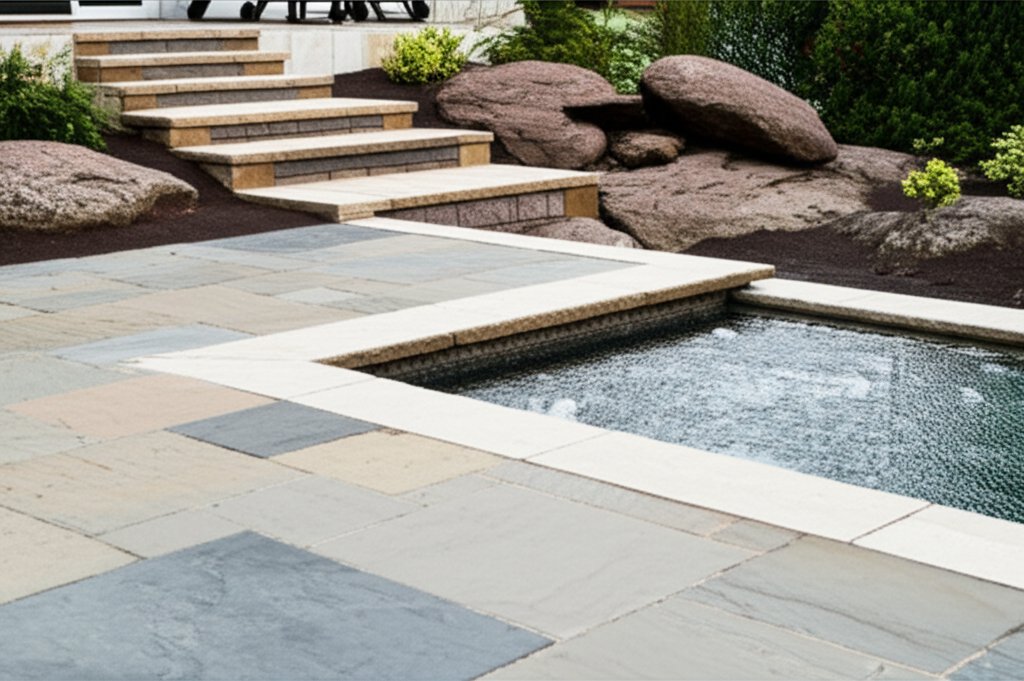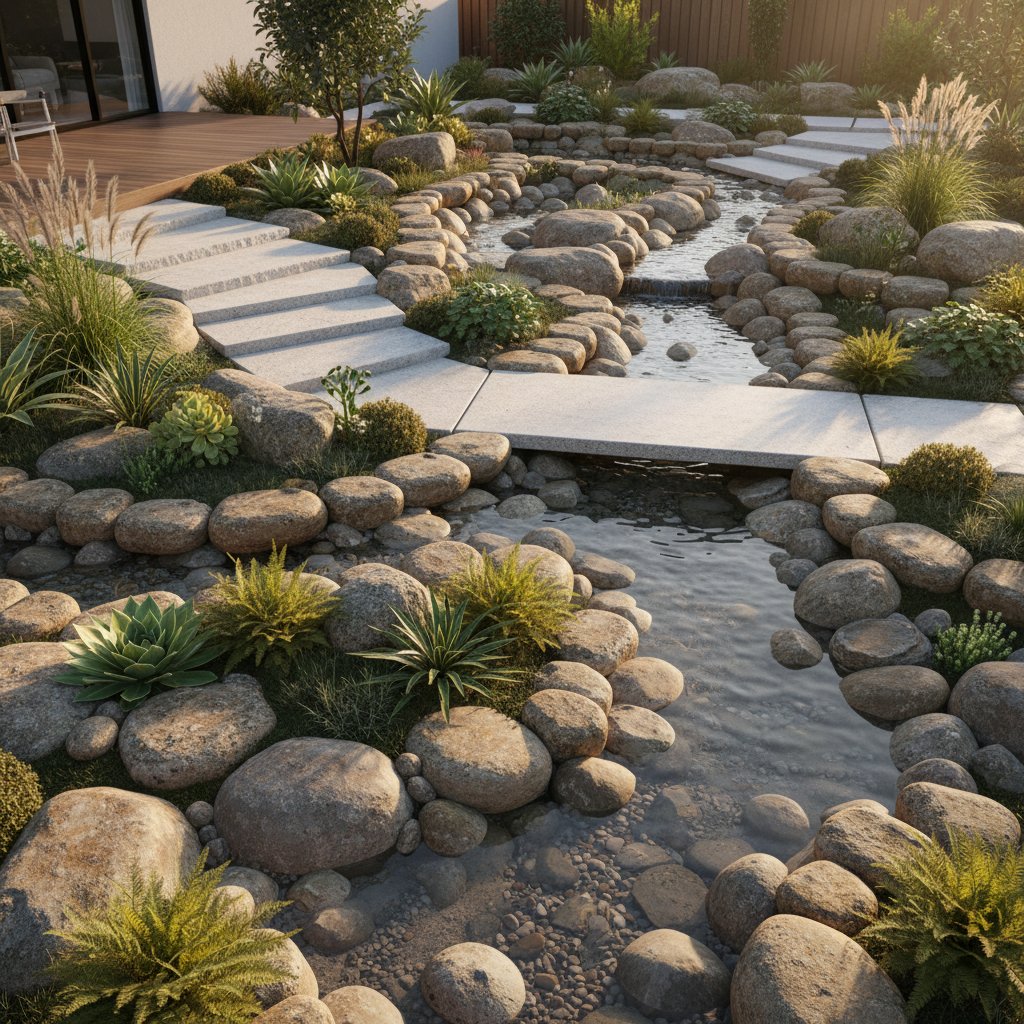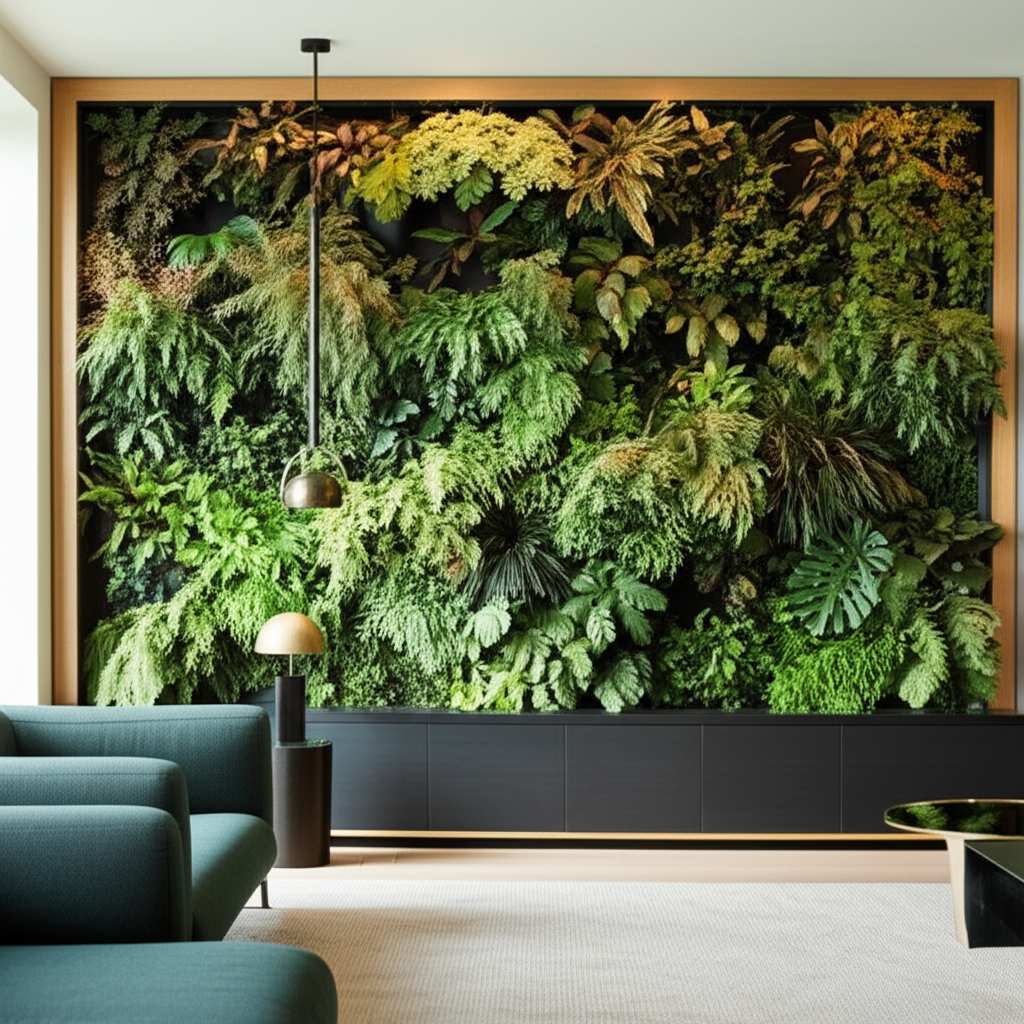Nature-Inspired Hardscaping for Tranquil Outdoor Spaces
Discovering the Calm of Biophilic Design
I recall a moment in a friend's small yard where a winding stone path and the gentle trickle of water behind a low wall stopped me in my tracks. That sense of peace and connection, as if stepping into a serene outdoor room, defines biophilic hardscaping. This design approach integrates natural patterns into patios, paths, and walls, creating spaces that feel like seamless extensions of the surrounding landscape. It is about crafting environments that nurture both human well-being and ecological balance.
Defining Biophilic Hardscaping for Your Yard
Biophilic hardscaping focuses on using materials and layouts that mirror nature within the non-living elements of a garden. Think of pavers, timber, and stone arranged to evoke natural forms like riverbeds or forest trails. This method prioritizes comfort for users while enhancing site functionality, reducing stress through organic shapes and supporting soil health with permeable surfaces. The result is a yard that welcomes you while performing sustainably.
Essential Elements of Biophilic Design
- Organic Stone Patterns: Lay stones in irregular, flowing designs to replicate natural features like leaf veins, adding a soothing rhythm to walkways.
- Curved Hardscapes: Use gentle arcs in paths to mimic natural trails, softening visual lines and creating intimate nooks.
- Natural Rock Formations: Incorporate stacked stones as seating or retaining walls, blending utility with earthy aesthetics.
- Biomimetic Features: Opt for materials that emulate nature, such as porous pavers for water infiltration or planters designed to support pollinators.
Emerging Trends for 2025 Landscapes
Innovations in craft and technology are making biophilic hardscaping more accessible. Precision CNC cutting shapes flagstone into organic, leaf-like pieces with minimal waste, while flexible concrete formwork and modular pavers reduce costs for curved designs. Sustainable options like recycled composite pavers and locally sourced stone lower carbon footprints. Smart-sensor pavers, which activate irrigation only when necessary, further blend beauty with efficiency.
Starting Your Biophilic Hardscape Project
Begin by observing your space over a full day. Map areas of sun and shade, identifying spots for warmth or cool retreats, and note natural slopes for drainage. Use a garden hose to outline potential curves before cutting materials. This initial step ensures your design aligns with the site's unique characteristics.
Selecting Materials with Purpose
Choose materials that resonate with your region and goals. Reclaimed flagstone offers a weathered charm, locally quarried stone integrates with the local palette, and recycled-plastic composites provide durability for curved layouts. Permeable interlocking pavers act like sponges, absorbing rainwater to reduce runoff. Each choice shapes both the look and performance of your space.
Design Strategies for Harmony and Utility
- Establish Flow: Craft an S-shaped path to guide movement, unveiling garden features gradually.
- Unify Materials: Repeat a single stone type across edging, steps, and walls for visual cohesion.
- Vary Textures: Pair smooth river stones with rugged fieldstone to add depth without chaos.
- Integrate Seating: Design low rock formations to serve as both retaining walls and casual benches.
Constructing Natural Rock Features Safely
Select stones with flat bases and minimal cracks for stability. Lay a compacted gravel foundation, then dry-stack stones for an authentic appearance. For taller structures, reinforce with hidden steel pins or masonry adhesive, and consult a professional if the feature will bear significant weight. These precautions ensure safety without sacrificing natural beauty.
Enhancing with Water and Wildlife Features
Position rain gardens in low areas to capture runoff, planting native sedges and wildflowers for biodiversity. Integrate smart-sensor pavers with irrigation systems to water only when needed. Root-inspired planters made from recycled materials can shelter beneficial insects while adding sculptural flair. These additions support both ecology and aesthetics.
Lighting for a Natural Nighttime Glow
Install low solar path lights sparingly to hint at direction without overwhelming the space. Conceal LED strips behind walls or under edges for a soft, moonlight-like effect. Keep light levels minimal near plants to protect nocturnal pollinators. Thoughtful illumination extends the usability of your outdoor room into the evening.
Maintaining Your Hardscape for Longevity
Regular upkeep preserves both function and appeal. Sweep paver joints weekly to maintain permeability, inspect rock formations every few months for shifting, and reapply sealant to stone surfaces every two to three years to combat weather damage. These simple tasks safeguard your investment and ensure lasting safety.
Inspiring Real-World Applications
A Portland patio combined curved basalt pavers with a rain garden, blending form with water management. In Austin, a narrow stone pattern mimicked a dry creek bed in a small lot, maximizing impact. A Seattle park used large rock seating and permeable paths to create a resilient public space. These examples highlight how thoughtful design unites materials and site conditions.
Taking the First Step Toward Transformation
Start with a manageable project, such as a single curved path or a small reclaimed-flagstone area, to build confidence. Visit Dickinsons Garden Center for material samples and expert guidance, or join a local workshop to learn rock-stacking basics. Repeat design elements like specific stones or curves to tie the space together. Small, intentional changes can evolve into a yard that fosters well-being and mirrors nature's grace.


